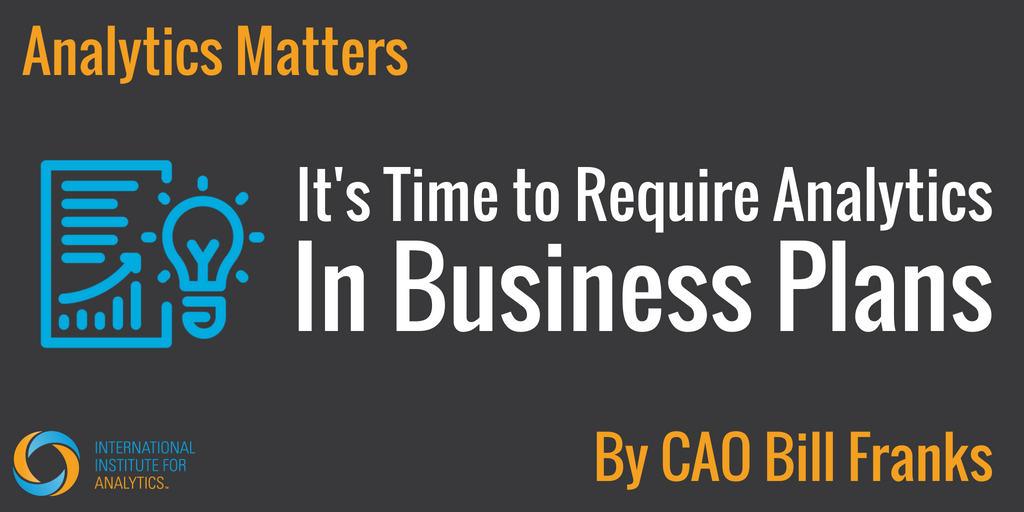

Profit and Loss (P&L) statements permeate businesses due to the need to track how a business is performing at overall, business unit, and even project-by-project levels. This blog raises a question: why shouldn’t an analytics plan be expected as a part of the business plan for any major initiative just like a P&L is? During some recent client discussions, it became apparent that the necessity of thinking about analytics up front must be reinforced and promoted by those of us in the analytics and data science community. Over time, it will then become a standard practice for the broader business community.
A P&L IS A GIVEN
It is widely accepted that if someone is asked to invest in anything of substance within the business world, they’re going to want to see an estimated P&L up front as part of the business plan. Then, if an investment is made, there will be an expectation to receive ongoing P&L updates in terms of both performance-to-date and projected performance moving forward. I doubt that many people would argue with this expectation or be surprised by it. The need for a P&L as part of a business plan is simply accepted.
This expectation to have a P&L makes sense. After all, a business needs to make money to survive. Even nonprofits, while relieved of profit pressure, still must balance income and expenses. Given the importance of financial performance, people accept that they’ll need to document a financial plan and be held accountable to it. A P&L is a critical component of any legitimate business plan and a P&L is associated with everything from a new team that is created, to a marketing campaign, to an investment in manufacturing equipment.
WHY AREN’T ANALYTICS A GIVEN TOO?
With the rise of analytics, businesses have been able to improve their efficiency, transparency, and performance. However, analytics are often still considered an add-on to a business plan rather than a critical component of the business plan. This really doesn’t make sense anymore. Not long ago, gaining access to data and analytical tools was expensive and difficult. Today, that is no longer so. Even small businesses are capable of capturing and analyzing data in order to track and adjust their performance. Similarly, small divisions within an organization, or even major project teams, have the ability to track and analyze their results.
We need to move to a world where an analytics plan is required and expected within a business plan right alongside a P&L. Without an understanding of the key metrics that will be tracked and how to track them, it isn’t possible to have full confidence in a business plan. It doesn’t make sense to green light a plan without a clear description of the analytics that will help both measure and explain the plan’s performance over time.
CHANGING THE EXPECTATIONS
Very few people seriously question that analytics (when executed and used correctly!) can be invaluable to any business initiative. Why shouldn’t students and business leaders be taught to expect (and how to put together) an analytics plan as part of a business plan just as they expect to put together a P&L? It no longer makes sense to move forward with a business plan while giving no consideration to analytics. It will take effort to achieve this mind shift, but the world should be ready for it today.
The good news is that analytics do usually end up being a part of any major business initiative today. The bad news is that the analytics are often a follow on or secondary discussion that comes during implementation of a business plan rather than as part of the business plan itself. It is time to make an analytics plan an expected item to be addressed from the very start of a business initiative. Is raising analytics to this level any more radical or shocking than the fact that a P&L is already raised to this level? No. If analytics and data science is to reach its full potential, shifting mindsets in this way is a critical step.